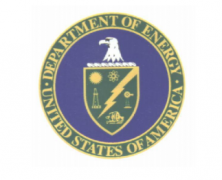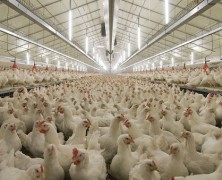What’s the biggest difference between LEDs and other forms of lighting systems? Is it that they’re 85% more efficient than incandescent bulbs? Or that they last thousands of hours longer than CFLs? While there are obvious benefits, according to Fast Company, the most revolutionary component of LEDs is likely to be their ability to recognize digital signals. For the first time, our lighting systems are going from analog to digital. No longer do lights just turn “off” or “on.” Now they can be “tuned” to emit any color of the rainbow, or change temperature and brightness, all from the touch of a finger on your smartphone app. We’re now staring at the future of LED lighting, and it’s a beautiful, brave new world. Since 2007, the U.S. has been effectively phasing out inefficient incandescent lighting through federal regulations enacted in the Energy Independence and Security Act. After starting out with an effective ban on 100-watt incandescent bulbs in 2012, followed by 75-watt bulbs in 2013 and 60- and 40-watt in 2014, LEDs have been the industry favorite as a replacement for Edison’s monumental invention over a century ago. One of the first reasons that LEDs took off instead of efficient but sterile CFLs is that they contain solid-state lighting (SSL) semiconductors. It was just twenty years ago Nichia’s Shuji Nakamura invented the blue LED in Japan. By covering the blue light in phosphorous coating, the industry was soon able to introduce a white LED light onto the market. While the first generation of LED lighting failed to outperform traditional lighting sources in performance and pricing, the predictable improvement curve of SSL has led prices to fall dramatically as product research and investment has skyrocketed. By 2013, Cree had released a LED bulb that looked and felt like a 60-watt incandescent, priced at under $14. By 2014, the LED lighting market is estimated at $17.4 billion and is predicted for rapid growth through 2020. The current rise can be explained mostly by LED technology’s superior durability, efficiency and performance in comparison to other lighting technologies. Further, the emergence of home automation and the “Internet of Things” will only serve to catapult LEDs to deeper and deeper market penetration rates. Here are benefits that digital networks and intelligent home automation systems hold for the future of LED lighting and human well-being. Health Benefits: “You have to start thinking of light as a drug,” said Terry K. McGowan, the director of engineering for the American Lighting Association, in an interview with nytimes.com. That means that we have to start recognizing the impact lighting has on our mental and emotional states. As artists have known for a long time, color affects our moods and can elicit emotional and physiological responses. For example, blue wavelengths in light — which LEDs are rich in due to their reliance on blue lights — have been shown to help us stay awake. Furthermore, LED lights can be programmed to follow the natural light rhythms of sunlight. This will increase human well-being by maximizing the efficiency of our circadian rhythms to indoor lighting, increasing focus, energy and fighting insomnia and depression disorders. Installed at work, automated LEDs will be able to increase worker productivity. Installed in the bedroom, automated LEDs will be able to help us fall asleep and wake up on time. Not only that, but LEDs are an amazing tool for indoor gardening, which help people, even those living in poor growing climates, to produce their own organic food and plants. Energy Efficiency Benefits: LEDs are already 80% more efficient that incandescents and a good 20% to 30% more efficient than most CFL options. But the efficiency of the technology doesn’t end at the individual diode. LEDs are much better than CFLs for home automation systems due to the advanced control options and rapid response switching and dimming. Using home automation systems, LED lights can be programmed to turn off or dim down...
$4 Billion DOE Loan Program Includes LED Lighting Projects...
posted by Taran Volckhausen
The U.S. Department of Energy (DOE) has announced a $4 billion loan guarantee program to lower greenhouse gas emissions in the United States. LED lighting projects will qualify for the program. To qualify for the loans, projects must meet one of the following requirements: renewable energy systems; efficient electrical generation, transmission and distribution technologies; or efficient end-use energy technology (LEDs qualify as an efficient end-use energy technology). Applicants should have a project that is market-ready, replicable and would not likely be fully financed on a long-term basis by commercial banks. The DOE loan program is primarily geared toward renewables. LEDs are increasingly being incorporated with renewable technologies such as solar energy, and are helping to make renewable technologies more viable. The efficiency and reduced costs of solar-powered LEDs means they have already started to outperform electrical grid wiring in applications such as road and bus shelter lighting all the way from Boston to Abu Dhabi. The primary opportunity for LED lighting in this federal loan guarantee program lies in its compliance with the efficient end-use category. LEDs use 80% less energy than standard incandescent lighting. Not only that, but the advanced programing capabilities and rapid “on/off” switching of LEDs lend themselves to home automation projects and use in intelligent lighting projects aimed to reduce energy usage. LEDs are more efficient than other light sources because the vast majority of energy they use is transferred into light rather than heat. With an estimated 17% of the total energy used in commercial and residential sectors in 2012 going to lighting, the potential for LED energy savings across the nation is enormous. Initial applications for the federal guaranteed loan programs are due October 1, 2014, along with a $50,000 fee for the first phase of the DOE loan guarantee...
DIY LED Grow Lights Using Flexible LED Strips...
posted by Taran Volckhausen
“There’s nothing quite like the pleasure you get from plants and flowers,” he said to himself. “They certainly do cheer you up.” ― Charmian Hussey, The Valley of Secrets Over the years we’ve had many customers come to us with questions about DIY LED grow lighting. Taking care of plants is a pleasurable activity that can provide food for a family or offer a portal to nature within the home. Not only that, but being around plants actually increases memory retention and emotional stability. LED lights provide a rich, full spectrum light, are extremely energy efficient, provide even, directional light distribution and emit very little heat — leading to a less expensive garden with richer results. Those interested in indoor gardening should follow these steps to build a DIY LED grow light guide using Flexfire LEDs strip lights. DIY LED Grow Light Parts: UltraBright™ 24v Architectural Series LED strip lights* Aluminum bars for heat dissipation Adhesive pads Silicone RTV silicone Nylon ties Solderless LED strip connectors (strip-to-strip and strip-to-power) Female coaxial connector with screw terminals for wiring 24v LED strip light power supply * Even when working in an indoor environment, consider Outdoor 24v Architectural LED strip lights to protect against humidity and also allow for easier cleaning DIY LED Grow Light Directions: Start by cutting the strip lights to match the width dimensions of your project. Check for markings after every third chip to locate the appropriate place to make your cut. After that, peel off the paper over the adhesive backing and attach the strips along the aluminum bar mounting. The aluminum will act as a heat sink, protecting your plants from excess heat and extending the lifespan of the LED chips. From here, attach solderless connectors to the strip lights. For added stability, tie down...
The Benefits Of Poultry LED Lighting...
posted by Taran Volckhausen
Chickens raised using an intelligent poultry LED lighting system have been found to produce higher quantity and quality of eggs, develop into maturity at a faster rate and enjoy an improved standard of health as compared to chickens raised under traditional light sources. Using LED-based technology chicken farmers can: Lower lighting costs Increase musculoskeletal development and weight gain Induce earlier maturity for hens destined to lay eggs Increase egg output and quality Regulate reproduction cycles Increase length of reproductive life Furthermore, farmers can adjust the color of the LED lights to promote certain outcomes. For example, using red light, farmers were able to stimulate sexual activity and reduce the amount of feed necessary to produce each egg — even though there was no difference in the size, or quality of the egg. The red LED lights were able to increase egg production by up to 38 per hen while decreasing food consumption by 20 percent. Green lights promotes chicken growth at early stages of development, while blue light promotes growth later along the life cycle of the chicken. Blue and green light improved feed conversion (the efficiency at which an animal converts animal feed into desired output such as eggs or meat) by up to 4%, and therefore reduced cost per pound of the chicken by up to 3%. Why is Poultry LED Lighting Superior to Traditional Poultry Lighting? Visible “white” light is actually composed of a range of colors, which can be viewed by refracting light through a dispersive prism. Incandescents, the most common form of poultry barn lighting, are missing many critical portions of the full spectrum found in sunlight. For instance, an incandescent bulb produces a highly diminished amount of both greens and blues. CFLs produce only narrow bands of color in...
Installing LED Strip Lights In Boats And Yachts...
posted by Taran Volckhausen
Looking to increase your boat lighting’s functionality and/or “bling” factor? If so, you’re not alone — we here at Flexfire LEDs get calls all the time with questions about installing LED strip lights in boats and yachts. So many in fact, that we’ve decided to share a few ideas and address some of the more common issues with this sort of installation. Whether you’re running a skipper or a barge, taking your boat out for pleasure or for fishing, LED strip lights are a great solution for low energy lighting that can be fully customized to meet the individual size and lighting demands of your boat. The first thing to consider when looking into LED strip lights for your boat is to determine whether the lights will be exposed to environmental elements such as water or sand. If you’re considering LED strips for your deck lighting, or perhaps outside of the hull, make sure the lights are rated for outdoor use and water protection. Each of our LED strip lights has an IP rating that specifies the amount and type of protection it receives from the elements. IP ratings consist of two numbers — the first number refers to the amount of protection against solid objects, and the second refers to liquid protection. The numbers for solid object protection run from 0 (no protection) through 6 (full protection), while the numbers for liquid protection run 0 through 8. A fully waterproof LED strip light would thus have a rating of IP68. For deck accent lighting, we suggest our colorful, customizable and versatile IP65 Outdoor ColorBright™ LED strip lights, which come in static red, green and blue, as well as remote-controlled color changing RGB. Many people call us looking to generate the attractive indirect glow they’ve seen on other boats. To achieve this...










